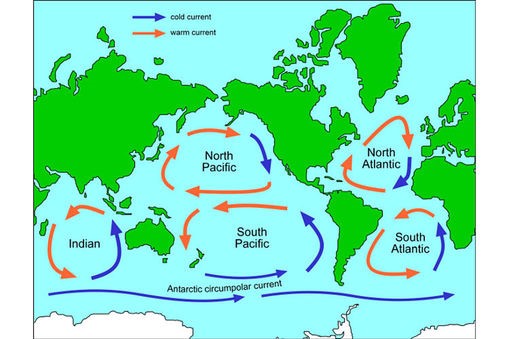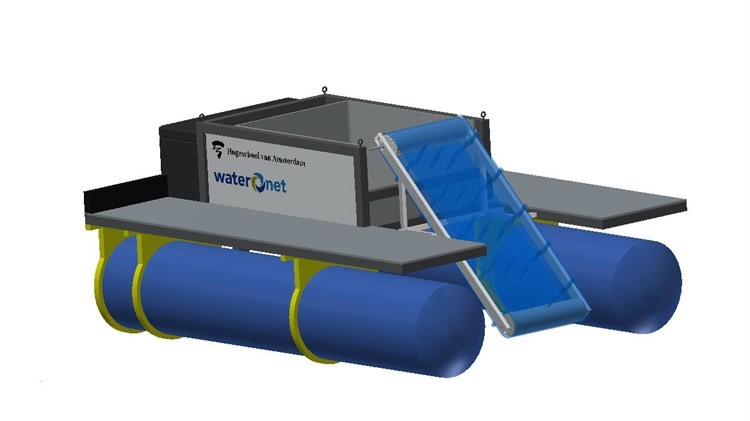PRE2016 3 Groep5
Group Members
| Student ID | Name |
| 0957942 | N.S.A. Messaoudi |
| 0958470 | J.J.J.B. Verstappen |
| 0955491 | C. van Otterlo |
| 0939540 | M.J.M. Smits |
| 0956810 | W.J.P. Goudriaan |
| 0953119 | J.I.A. Spapen |
introduction
Since 1945 plastic is inseparable from our society, where it brought us great fortune and great use. It is used to carry drinks, package foods, toys, etc. Whereas it has a good side that helps humanity, it also has its downsides. A lot of people throw their garbage, of which most is plastic, very easily on the ground and in rivers. This means the mainland and the oceans get polluted, instead of the plastic being recycled, when it is thrown away. On the mainland there are a lot of organizations, which focus on preserving the mainland’s environment. For example by sending people to collect waste next to roads and beaches. The amount of organizations in the seas and oceans are however, greatly outnumbered. While the organizations on the mainland can hardly keep the pollution at a steady level, the pollution in the seas and oceans has risen exponentially for several years already. The plastic in the ocean decomposes gradually which results in a highly soiled sea which is more difficult to clean up. Even when the plastic decomposes into small parts, it affects and influences the marine ecosystem as a whole. A fish cannot tell food and plastic apart and slowly gets poisoned and killed by the toxic plastic in its stomach. The same happens to many birds that get their food out of the water.
The amount of organizations in the seas and oceans are however, greatly outnumbered. While the organizations on the mainland can hardly keep the pollution at a steady level, the pollution in the seas and oceans has risen exponentially for several years already. The plastics in the ocean decompose gradually which results in a highly soiled sea which is more difficult to clean up. The small parts of plastics influence the marine ecosystem as a whole. Fish cannot tell food and plastic apart and slowly gets poisoned and killed by the toxic plastic in its stomach. The same happens to many birds that gets their food out of the water and even humans can be affected by this. If a fish gets poisoned and a human will eats that fish, then the human will also be affected by the effects.
The plastic that gets in the sea, gathers in so called ‘gyres’. These are huge area’s to which the plastic floats because of the current. It slowly floats in circles in the same area. There are 5 huge gyres around the world. See figure below.
Figure 1, the 5 gyres in the world
Currently there is a project that is cleaning up these gyres. They put down a giant net in the gyres and let the current of the gyres, pour the plastic in the gyres. This way all the plastic gets pushed into the net and collected in one place. However cleaning up the gyres alone is not enough. The plastic that is in the gyres came from somewhere and the gyres are still growing every day. That’s why it is also important to prevent the gyres from getting bigger, by cleaning up the plastic closer to its source.
The thing that we want to accomplish is preventing the gyre from becoming bigger. We start with that by looking at the coast of The Netherlands. The goal that we’ve set for ourselves is to try to let no plastic/garbage pass through the coast of The Netherlands. The current of the North Sea along The Netherlands is from the bottom to the top or the other way around, which depends on the tides. This way some places can be set up for agents that clean up the plastic that passes.
current situation
In order to tackle the problem we set for ourselves we need a good overview of the situation. We did this by writing down all the questions we had about the garbage problem in the Nordsea and then we started searching for answers. Our strategy was as following; first search for the answer on internet to get a basic intuition and then contact several organizations asking them all the same questions and combine all this information into one final answer.
The mean sources we used are either reports or the organizations we contacted. This are the reports we used: • Wat spoelt er aan op het strand – Stichting De Noordzee • Mariene Strategie voor het Nederlandse deel van de Noordzee 2012-2020 – Rijksoverheid • Jaarverslag 2015 – Stichting De Noordzee • Guideline for Monitoring Marine Litter on the Beaches in the OSPAR Martime Area – OSPAR commission • The vertical distribution of buoyant plastics at sea: an observational study in the North Atlantic Gyre – J. Reisser, B. Slat, K. Noble, K. du Plessis, M. Epp, M. Proietti, J. de Sonneville, T. Becker and C. Pattiaratchi
The following organizations were contacted: • CBS • Rijkswaterstaat • Kustwacht • Clean up • Greenpeace • Stichting de Noordzee
Of course not all organizations were as helpful as we would have like, but we got enough response to get a complete answer to all our questions. Here are the questions we came up with followed by the answer in italic.
1. Is the problem significant enough for organizations like the government to invest money in?
There are several organizations searching for solutions for this problem, which it is significant enough to be solved. Not just the pollution issue in itself is a problem for these organizations, but also the health issues when the garbage breaks down and ends up in the food chain. The government is the biggest investor since it is a societal matter and it is hard for a profit seeking company to make money off. So if we can show the government that our project is the solution for this problem, our project could be worth investing in.
2. Which kinds of garbage-objects are most common in the Nordsea?
There are multiple organizations (Rijkswaterstaat, Stichting Noordzee en NIOZ) that monitor the garbage on the beaches and in the Nortsea. With this data a list was composed, summing up the top 10 most found garbage-objects in and around the sea.
a. Ropes and nets b. Plastic pieces c. Plastic bags d. lids e. Candy wrappers f. Balloons g. Plastic bottles h. Wood i. Plastic food packaging j. Industrial plastic contents
3. Who are responsible for the garbage in the North sea and where are they located at the coastline?
More than half of the waste comes from the maritime sector. So logically the major port cities are geographical hotspots with regard to the dumping of plastic waste in the North sea. Other pollution comes mainly from the people visiting the beaches, so crowded beaches are also potential hotspots. Also the rivers are highly polluted which makes the places were the rivers goes into the ocean as a dumping hotspot
4. Are there hotspots were the garbage gathers (under influence of the current), are these hotspots on the coastline and/or in sea? If they exists, were can they be found?
Generally speaking the plastic gets smaller in terms of size the further one distances itself from the coast. Our focus is mainly on the larger pieces of plastic, so in combination with the previous question, the hotspots can be recorded around the mouths of rivers and harbors and along the coastline crowded beaches.
5. What is the order of magnitude of the garbage that is in the North sea, do you have exact numbers?
Regarding soil pollution of the North Sea, we are talking about 110 pieces of plastic per square kilometer in the North sea. Pollution along the coastline is 380 pieces per debris 100 meters beach.
6. At what depth is can the garbage be found?
The greatest concentration of debris is around or on the surface. There has been measured up to a depth of 5 meters, and from this it was found that 80% of the waste was in the first 2-3 meters. Which will be further explained in the chapter garbage distribution in the appendix.
7. Are you familiar with comparable project like ours, if so could u give us some information about the projects?
A similar project is the ocean clean up. The idea is to be achieved on a large scale waste in the North Pacific gyre using two long arms. However, this project is on a much larger scale with higher concentration of waste per km ^ 2 so not really applicable to our problem.
Another project undertaken by water network. It has created an autonomous robot that looks very much like our robot and speed through the water and waste on a treadmill takes with him.[b]
Another similar project was set up by the recycled Island Foundation. they make a sort of trial and place it on the coast of Rotterdam in strategic places and capture that way plastic.
Appendix
Garbage distribution
Before we can start with designing our robot we need to have an impression of where our target, the garbage, is located. After contacting several organizations we were able to make a proper estimation of how the garbage is disturbed in the Northsea.
Starting off with the depth of the garbage, research has shown that in a water column of 5 meter, starting at the surface, 80% of the it can be found in the top 2 to 3 meters [b2]. However, these numbers follow from measurements done in the North Atlantic Gyre, so do they also hold for the situation in the Northsea? Without going to much in physical detail, we will try to explain if the North Atlantic ocean is comparable with the Northsea. A object floats if it has a smaller density then the liquid. Density is a ratio of mass and volume and since these quantities are the same in both situations we can assume the results of the study are also applicable for the Northsea.
The second variable is the distance of the plastic to the coast. Since we couldn’t find any reports with the necessary data we contacted Rijkswaterstaat. It turned out there isn’t any specific data, but the rule-of-thumb is; the further away from the coast, the smaller and less dense the garbage gets. Combining this information with location of the hotspots (outlet of rivers, harbours and beaches), only a few potential locations remain.
sources
[b2] 1. The vertical distribution of buoyant plastics at sea: an observational study in the North Atlantic Gyre – J. Reisser, B. Slat, K. Noble, K. du Plessis, M. Epp, M. Proietti, J. de Sonneville, T. Becker and C. Pattiaratchi
drinkwaterzuivering:https://www.evides.nl/drinkwater/hoe-wordt-mijn-drinkwater-gemaakt
waterzuivering (idee): http://www.nationalgeographic.nl/artikel/oceanen-weer-schoon-dankzij-boyan-19
http://www.plasticsoupfoundation.org/feiten/gevolgen-voor-het-milieu/
http://www.plasticsoupfoundation.org/feiten/gezondheidseffecten/
http://www.icgrevelingen.nl/blog/2016/01/14/cleanriverproject/
http://www.boatdesign.net/forums/sailboats/speed-average-sailboat-18365.html
[b] https://www.youtube.com/watch?v=BYXlv8fgj80&feature=youtu.be Garbage distribution
https://www.theoceancleanup.com/
http://www.tedxdelft.nl/2012/10/tedxdelft-first-performer-boyan-slat/
https://plasticsoepsite.wordpress.com/onstaan-plasticsoep/
https://www.theoceancleanup.com/technology/ Ocean clean up
http://www.wur.nl/nl/Dossiers/dossier/Plastic-afval-in-zee.htm wetenschappelijke artikelen

